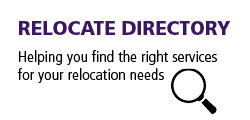Recipe for finding the best-fit candidate
What does a best-fit candidate look like? TheMIGroup explores the importance of, and best practices in, candidate assessment, and how a well-thought out program can maximise assignment success.

Talent management + global mobility
Traditionally, the candidate assessment process was performed behind the scenes; HR would select possible candidates from a talent pool, assess their suitability for an assignment, and then hand off the selected assignee to global mobility to begin the pre-departure training and administration.Of late, more companies are seeing the value in introducing global mobility earlier in the process, creating a collaborative approach that improves the chances of success, increasing the efficiency of the overall process. Global mobility professionals have the most comprehensive understanding of the classic assignee “red-flags”, and can help identify whether these barriers are surmountable, or can risk jeopardising the success of the assignment.The incorporation of successful candidate assessment strategies is not just applicable to relocation, but can have a positive spillover effect into other components of talent management, such as evaluating an employee’s overall capacity to develop within a company, which effects recruitment and business planning.Assignment flexibility
Oftentimes, a candidate may not fit well within the pre-defined parameters of the assignment, but if this is discovered early on, it is worth discussing how flexible your company can be with the project structure. In instances where a best-fit and enthusiastic assignee can’t seem to bolster the same enthusiasm from his family when it comes to relocation, companies have successfully re-modelled short-term assignments into a commuter arrangement, or, in other cases, a split-family arrangement can be fashioned through multiple return-trips included within the assignment package.Monetary assessment
An obvious, yet often overlooked, component of a comprehensive assessment strategy should be the cost; a company should assess the investment of a candidate from a financial standpoint, particular to each assignment. A candidate cost-assessment is typically based on the family size, background, housing status and position, as well as the cost of any preparatory coaching or services necessary to prepare the candidate for the assignment.The cost assessment of each candidate is then compared to the return on investment of the talent. While the financial return on investment is not always instantaneous or short term, as long as the numbers add up over the foreseeable future, then the move makes good business sense.Data Analytics tools are proving to be helpful in organising the spectrum of information regarding the candidate’s background, the assignment and host location to form detailed cost projections, which are effective when used as part of a broad candidate assessment system that accounts for other factors that may not have an assigned monetary value.Outside the box
The following are innovative best practices for enhancing your candidate assessment program.Re-assess assignment criteria
Jean Gamble, a recruitment specialist at Jean Gamble & Associates, explains in an interview with Dice, a technology talent solutions company, that too often poor hiring decisions are made because there is a disconnect between credentials, and what is really needed for the position. “The job definition and the criteria for the job are different, and often if you went to the people who actually perform the job, you’ll hear an entirely different description of what it takes to perform the necessary tasks than what’s posted in the job definition.”The same principles should be applied within global mobility through involving current or past assignees and transferees in mapping out the necessary strengths required to succeed, specific to the assignment and the destination location. This insider insight can help identify particular nuances that may not have been recognised by a hiring team in the home location.Building robust pools!
Be proactive rather than reactive in your talent mobility strategy! Source a best-fit candidate pool of employees who are well suited for an international assignment, and capture this pool within a database.This may involve reaching out to various stakeholders within your company to help identify these candidates, such as business unit managers, who are better aware of who is well suited, qualified and interested in pursuing an international assignment. Involve global mobility early in the process to further advise on candidate suitability. This allows for a more efficient candidate selection process should an assignment opportunity arise.Self-assessment tools
A self-assessment tool administered before the assignee accepts the assignment can help give inside insight in the most cost-effective manner, as well as empowering the assignee to be involved in the decision process early on. These tools allow employees to gain awareness of their particular strengths and areas of potential challenges when transitioning and adapting to life in a foreign environment.Some companies opt to administer these tools early on, to help the employee assess whether or not an international assignment should be included within their career development plans, empowering them to decide whether to opt-in to potential talent pools.Find out more about TheMIGroup©2025 Re:locate magazine, published by Profile Locations, Spray Hill, Hastings Road, Lamberhurst, Kent TN3 8JB. All rights reserved. This publication (or any part thereof) may not be reproduced in any form without the prior written permission of Profile Locations. Profile Locations accepts no liability for the accuracy of the contents or any opinions expressed herein.










































